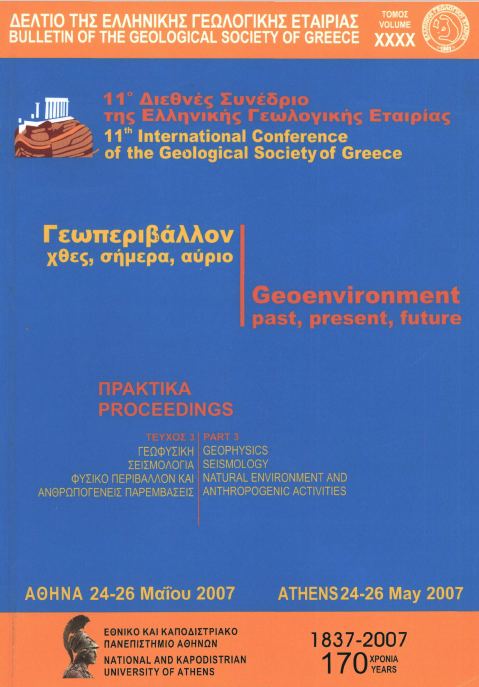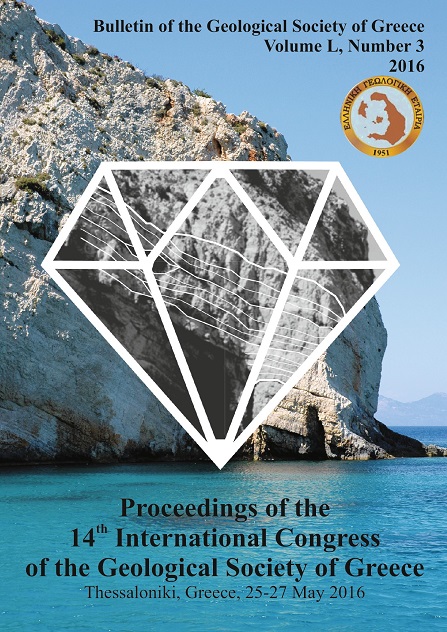Velocity models inferred from p-waves travel time curves in south Aegean

Περίληψη
Με σκοπό τη δημιουργία μοντέλων ταχύτητας στην περιοχή του νοτίου Αιγαίου, χρησιμοποιούμε τις καταγραφές σεισμών κατά τη χρονική περίοδο από 1η Ιανουαρίου έως 3Ιη Αυγούστου 2005 από ένα νέο τηλεμετρικό δίκτυο που εγκαταστάθηκε και λειτουργεί στην περιοχή της Κρήτης. Τα μοντέλα ταχύτητας κατασκευάζονται από τις καμπύλες χρόνων διαδρομής των επιμηκών κυμάτων και χρησιμοποιούνται σε συνδυασμό με τις χρονικές διορθώσεις στο χρόνο άφιξης των σεισμικών κυμάτων σε κάθε σεισμολογικό σταθμό του δικτύου για τον ακριβή προσδιορισμό των εστιακών παραμέτρων των σεισμών που έχουν καταγραφεί στην περιοχή του νοτίου Αιγαίου με τη χρήση του προγράμματος HYPOINVERSE. Συνδυάζοντας όλες τις διαθέσιμες πληροφορίες από τη βιβλιογραφία και τα αποτελέσματα της παρούσας μελέτης προσδοκούμε να συμβάλουμε στην αποσαφήνιση του σεισμοτεκτονικού προτύπου της περιοχής καθώς και της γεωμετρίας της καταδυόμενης λιθόσφαιρας της ανατολικής Μεσογείου.
Λεπτομέρειες άρθρου
- Πώς να δημιουργήσετε Αναφορές
-
Nikolintaga, I., Karakostas, V., Papadimitriou, E., Vallianatos, F., & Panopoulou, G. (2007). Velocity models inferred from p-waves travel time curves in south Aegean. Δελτίο της Ελληνικής Γεωλογικής Εταιρείας, 40(3), 1187–1198. https://doi.org/10.12681/bgsg.16855
- Ενότητα
- Γεωφυσική και Σεισμολογία

Αυτή η εργασία είναι αδειοδοτημένη υπό το CC Αναφορά Δημιουργού – Μη Εμπορική Χρήση 4.0.
Οι συγγραφείς θα πρέπει να είναι σύμφωνοι με τα παρακάτω: Οι συγγραφείς των άρθρων που δημοσιεύονται στο περιοδικό διατηρούν τα δικαιώματα πνευματικής ιδιοκτησίας επί των άρθρων τους, δίνοντας στο περιοδικό το δικαίωμα της πρώτης δημοσίευσης. Άρθρα που δημοσιεύονται στο περιοδικό διατίθενται με άδεια Creative Commons 4.0 Non Commercial και σύμφωνα με την οποία μπορούν να χρησιμοποιούνται ελεύθερα, με αναφορά στο/στη συγγραφέα και στην πρώτη δημοσίευση για μη κερδοσκοπικούς σκοπούς. Οι συγγραφείς μπορούν να: Μοιραστούν — αντιγράψουν και αναδιανέμουν το υλικό με κάθε μέσο και τρόπο, Προσαρμόσουν — αναμείξουν, τροποποιήσουν και δημιουργήσουν πάνω στο υλικό.




